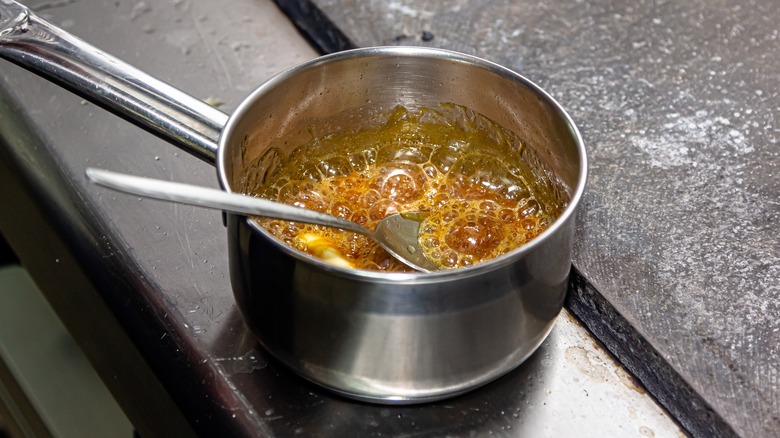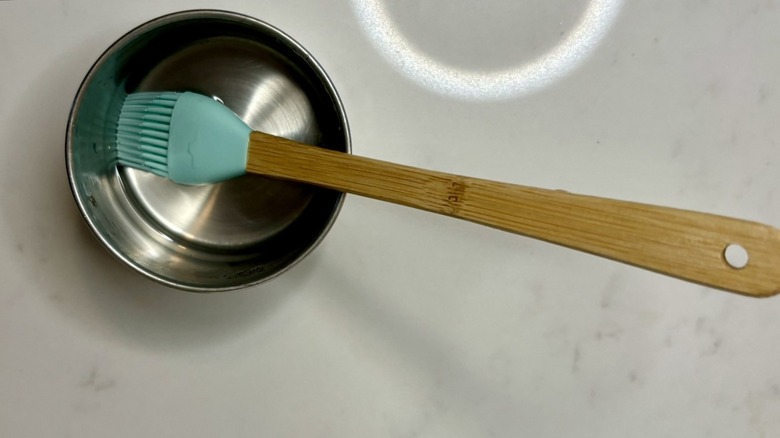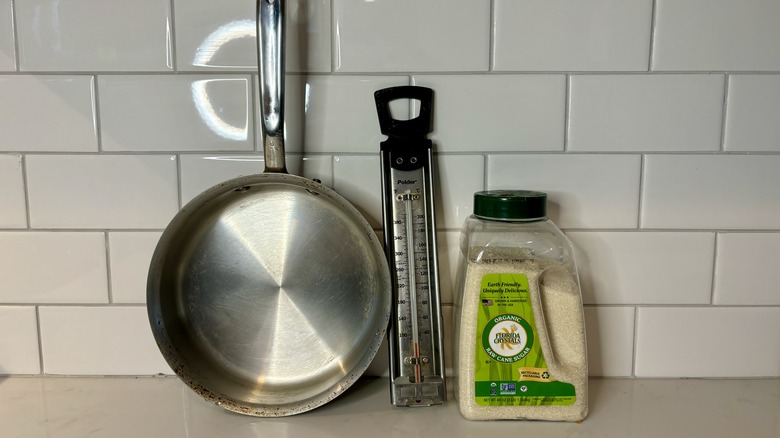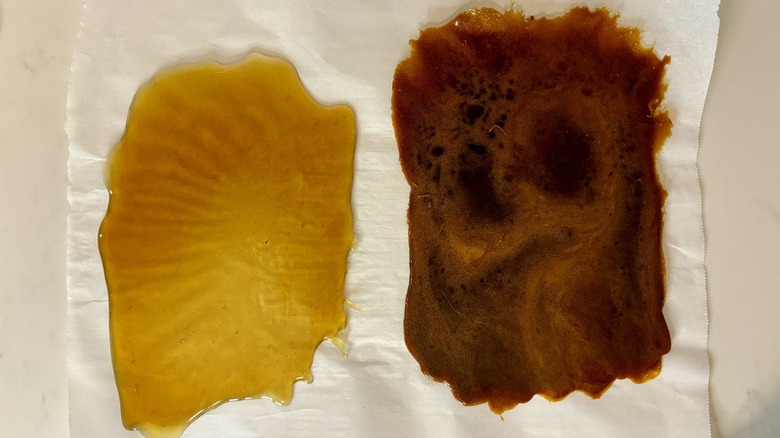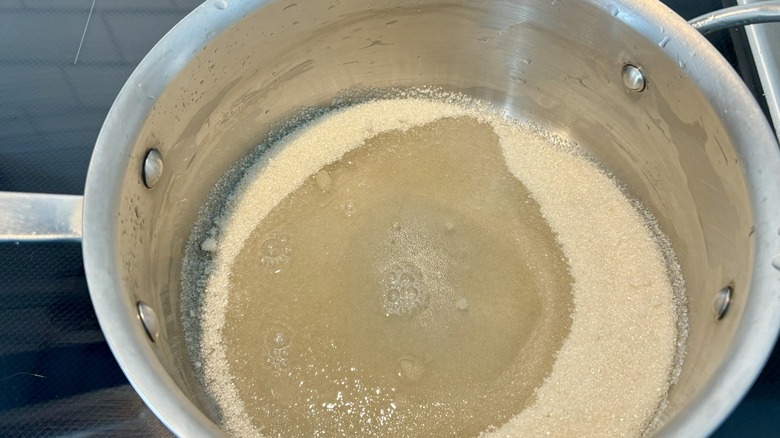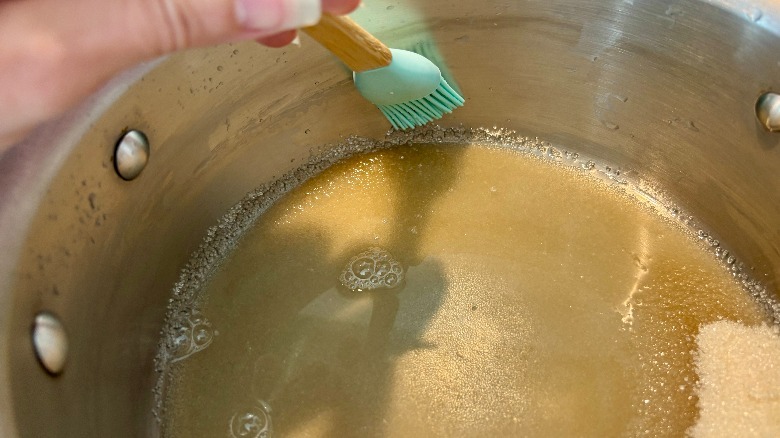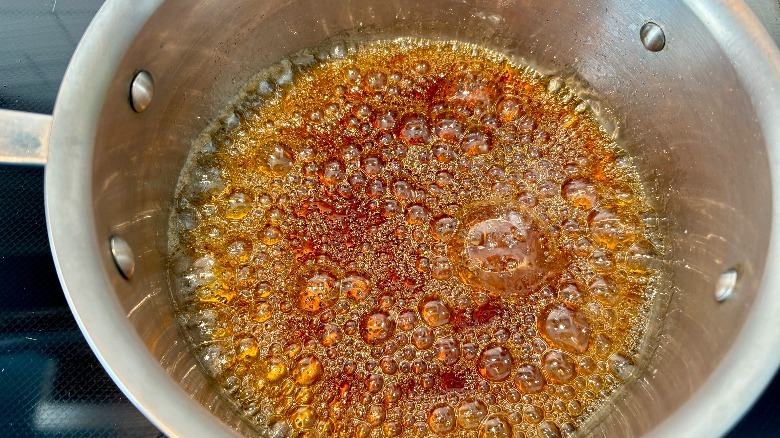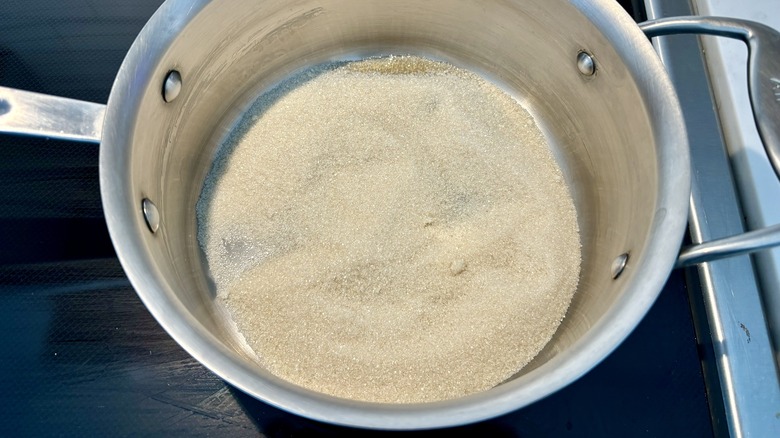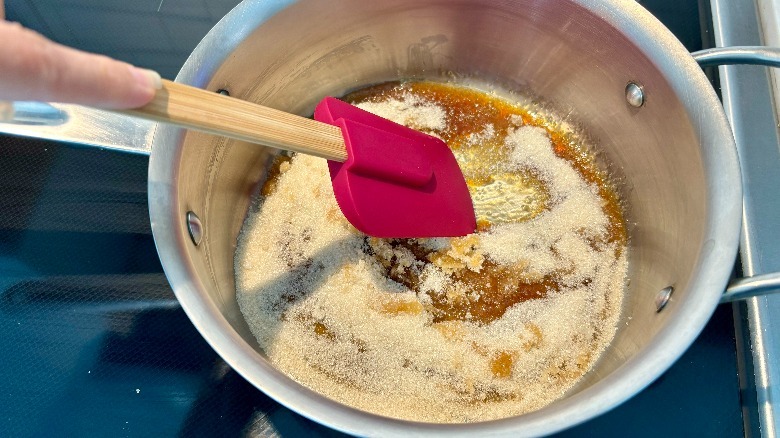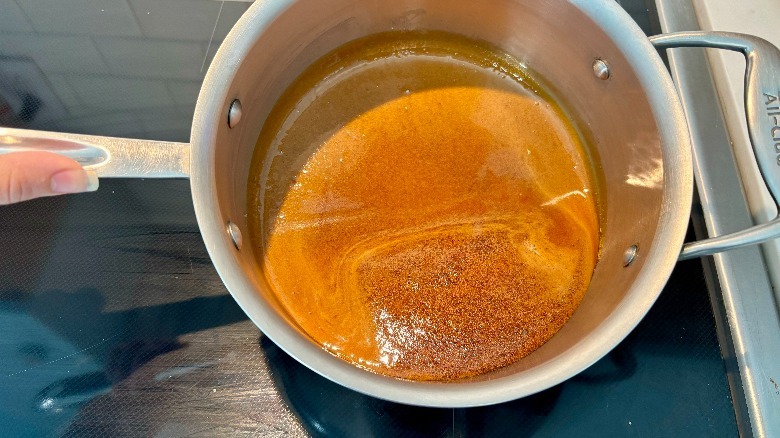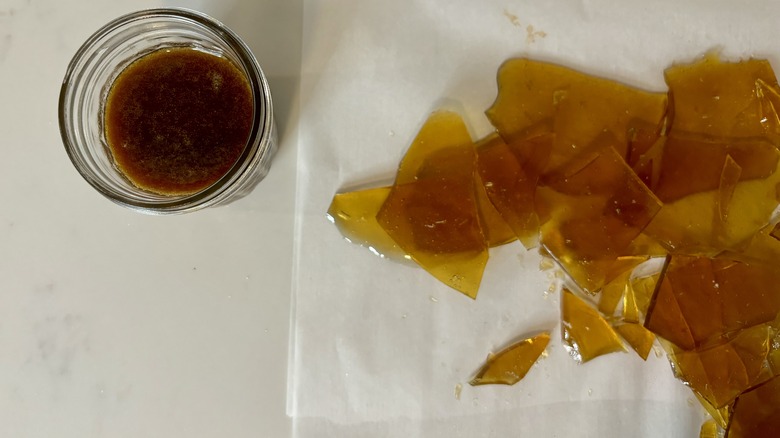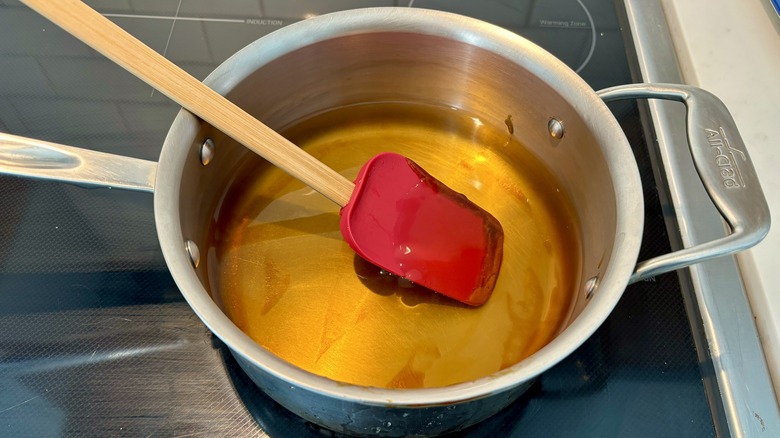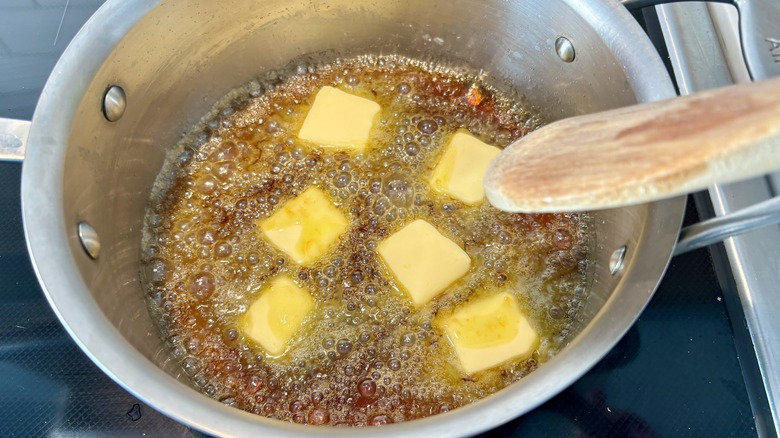How To Caramelize Sugar Flawlessly
Caramel is the perfect base for candy, sauces, and other sweet treats. However, did you know that most of the caramel you get at the grocery store is actually just flavored corn syrup, not true caramelized sugar? This is a travesty because caramel brings a beautiful toasted flavor to dishes and takes just one basic ingredient: sugar.
Indeed, caramel is simply sugar brought to its melting point to become a clear liquid and then cooked a little longer to be transformed into beautiful sweet brown syrup. With a little practice and some patience, you can learn to caramelize sugar to make caramel. And while we do recommend having some cooking experience before proceeding, making caramel is easier than you probably think.
Before we get started, there are some basic definitions to understand. Caramelized sugar is not caramel sauce; it is sugar that has been liquified and cooked. Without additional ingredients, caramelized sugar will return to a rock-hard state once it cools. To keep caramel soft and saucy, a fat, such as butter or cream, must be added. And butterscotch is just caramel made with brown sugar instead of white sugar. Now, let's get started.
Wet vs. dry caramel
You may have heard the terms "wet" caramel and "dry" caramel. This does not refer to the end texture of the caramel. Instead, a wet caramel is one that is made using sugar and water, and a dry caramel is made using just sugar. There are advantages to each.
Wet caramel allows for more control and can be more manageable for beginners. However, it takes longer to cook and develops a stronger flavor. Dry caramel requires more practice and can burn more easily as it cooks faster. It can also have a milder caramel flavor.
The tools you will need
To caramelize sugar, there are a few tools you need, and a few extras that might be helpful to have on hand. To make a basic caramel, all you need is a stove, a pan, a spoon, and some sugar. If you decide to make a wet caramel, you will also need water.
A wet pastry brush can help dissolve sugar on the sides of the pan, but it is not a necessity. A candy thermometer can also help prevent you from burning the sugar as it gives you a better understanding of what stage your sugar is in.
A note on pans: Try to avoid using a dark-colored pan (such as a nonstick-coated one) as this will make it more challenging to see the end color of your caramel. Instead, stick with a metal or a white-coated pan. And don't worry about cleanup; we will teach you a useful trick for this.
Common mistakes
The reason caramelizing sugar can be so daunting is that several common mistakes are easy to make when attempting it. Knowing about these ahead of time makes them easier to avoid.
Sugar melts and begins to caramelize at 320 degrees Fahrenheit. Overcooking or undercooking it can ruin its taste. This is where a thermometer and a light-colored pan will help as you can easily see what color your caramel is becoming. Undercooking is common for beginners who tend to get spooked by the rapid change and worry about burning the caramel. On the other hand, a perfect caramel can become overcooked in a matter of seconds. Avoid walking away from it while it is cooking. Additionally, if you have an electric stove, add your pan to another burner as soon as the caramel is done to avoid the radiant heat continuing to cook it.
Finally, crystallization is a mistake that is not easily fixed. Not to be overdramatic, but one piece of crystalized sugar can ruin an entire batch of caramelized sugar. This piece of solid sugar will act as a seed and spread crystallization throughout the pan. Instead of having a clear brown syrup, you will end up with a grainy mess. To avoid this, do not over-stir. Instead, just swirl the pan gently.
Making wet caramel
Step 1: Place water and sugar in the bottom of a pan and turn on medium heat. Usually, a ratio of 1 cup sugar to ¼ cup water will do the trick. The water will evaporate out as it cooks, but it will allow some additional control when dissolving the sugar.
Step 2: Gently stir as the sugar begins to dissolve. Do not over-stir. Aggressive stirring and splashing sugar up in the pan will lead to crystallization. If any sugar gets on the sides of the pan, use the wet pastry brush to incorporate it into the mix.
Step 3: Once all sugar is dissolved, allow the caramel to simmer until the desired color is reached. The temperature will be at least 320 degrees Fahrenheit. Do not walk away at any point. The whole process will only take about 10 minutes, if that.
Making dry caramel
Step 1: Place sugar in the bottom of the pan and turn on the heat to medium. Allow it to sit until the edges of the sugar begin to caramelize.
Step 2: Use a spoon or spatula to move the sugar around or swirl the pan gently. This will help encourage even caramelization.
Step 3: Once all sugar is dissolved, stop stirring. You can still swirl the pan gently if needed. Allow the now-caramelized sugar to simmer until the desired color is reached. The temperature will be at least 320 degrees Fahrenheit. Be sure not to step away at this point, as this part of the process takes even less time than it does when making wet caramel.
Storing your caramel
To store your caramel, you have a few options. You can pour the caramelized sugar onto a parchment-lined baking sheet and allow it to cool completely. This will create a hard caramel candy sheet that can be cracked into pieces and saved in a cool place in an air-tight container.
Alternatively, you can add butter and heavy cream and turn your caramel into a sauce. This can be stored in an airtight jar in the refrigerator for up to a week.
Cleanup tips
Whatever you do, don't let caramelized sugar cool entirely in the pan. You will not get it out easily. Avoid that and cleaning up doesn't have to be a sticky mess.
Immediately after you have made your caramel and put it away, fill your pan with warm water and let it sit. This will start to dissolve the sugar solids. Come back later and drain your pot. The sugar will come right out of it. Then, simply wash and dry your pan like normal. If you're having extra difficulties, bring the water in the pan to a simmer to loosen any additional tough pieces.
Ways to use caramelized sugar
Caramel can be used in many different ways. It can be used as the base for delicious candy such as dark chocolate-covered salted caramels. You can also add butter and cream and make a caramel sauce that is the perfect topping for ice cream, or take the caramel pieces and stuff them into white chocolate chip cookies to pump up your cookie game. The options are endless.
